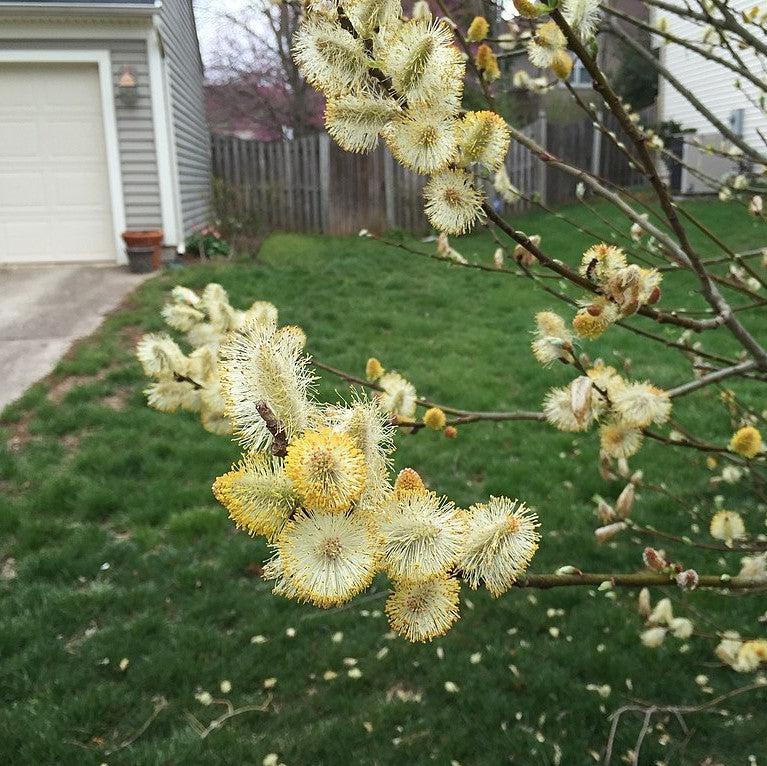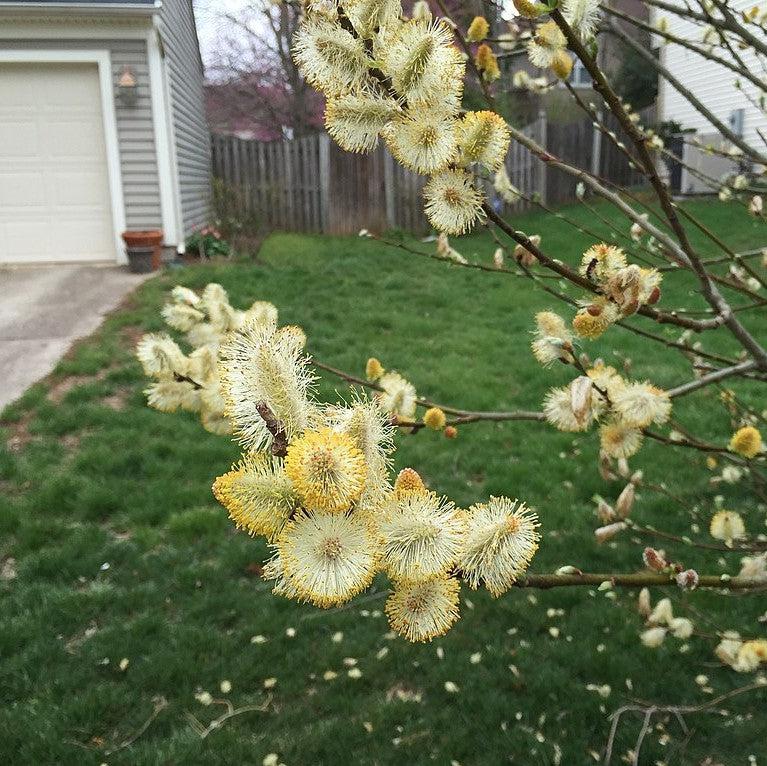Pussy Willow is a large multi-stemmed native deciduous shrub with a rounded spreading habit. The finely toothed leaves are lanceolate to elliptic, about 2-4 inches long with no significant color in fall. The small, fluffy, silver-gray catkins that appear before the leaves in early spring give the plant its common name. Thrives in full sun with moist to wet well drained soils. Tolerates occasional flooding.
Salix discolor is a host for the Viceroy an d supports a large number of the specialized bees.
|
Type: |
|
|
Origins: |
Northern N. America |
|
Height: |
10' - 20' |
|
Spread: |
8' - 12' |
|
Spacing: |
10' |
|
USDA Hardiness Zone: |
2 - 7 |
|
Culture: |
|
|
Bloom Color: |
White |
|
Season of Interest: |
MAINTENANCE NEEDS: High maintenance. Avoid dry soils. Pruning should be done in late winter to early spring to maintain its shape and promote vigorous growth. No serious pests or diseases, but watch for aphids, scale, borers, and leaf spot.
LANDSCAPE USES: Group Plantings or Specimen Tree, Naturalized Areas, Woodland Gardens, and Shade Tree
COMPANION PLANTS: Red Maple, Creeping Phlox, Silky Dogwood
IMAGES: Famartin, 2017-04-03 15 46 46 Pussy Willow blooming along Scotsmore Way near Kinross Circle in the Chantilly Highlands section of Oak Hill, Fairfax County, Virginia, CC BY-SA 4.0, (2) Krzysztof Ziarnek, Kenraiz, Salix discolor kz1, CC BY-SA 4.0, (3) Famartin, 2017-04-03 15 47 47 Pussy Willow flowers along Scotsmore Way near Kinross Circle in the Chantilly Highlands section of Oak Hill, Fairfax County, Virginia, CC BY-SA 4.0
*As plants have ranges in appearance they may not appear as the images shown.



























































